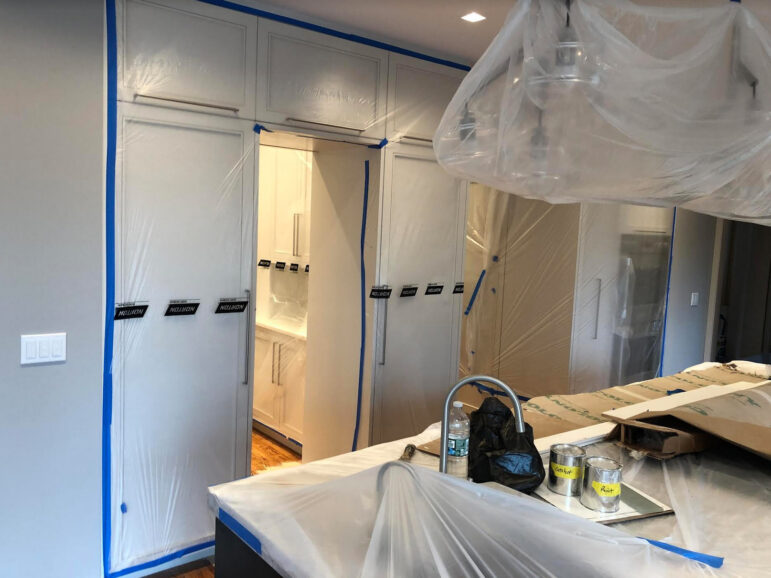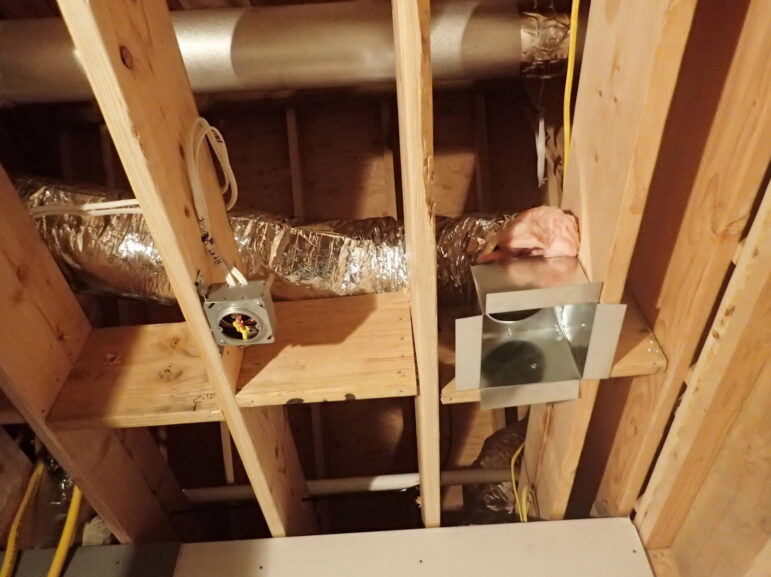By Scott Simonsen, Owner, Old World Craftsmen, Greenwich
PROJECT SCHEDULE
“Will my project drag on and on???”
This may be the top complaint we hear in business conversations and from friends and acquaintances doing renovations. The two biggest reasons for delays in a project are materials not arriving on time and the tradesmen not showing up daily to keep the project moving forward. A kitchen that is projected to take 5 weeks does not drag on for months with a builder who has crew on site working daily! It happens because…
- Key components don’t arrive and are needed to move the project to the next step. There are hundreds of dependencies in construction and each task must be done in order, and a critical missing component can stop progress. OR
- A green or careless builder may take on too many projects and be “bouncing” from project to project trying to juggle them all.
SOLUTION: A top notch builder knows or checks the lead times of key components in the renovation. The start date of your project should be calculated based on target delivery dates of doors, windows, cabinetry and fixtures. A thoughtful design phase will reveal products (e.g. doorknobs, light fixtures, trim tiles) that need to be pre-ordered. Ask your builder’s references specifically to see if he moves his projects forward daily! If there was downtime, why was that?
UNEXPECTED EXTRAS
“Will this price I’m being given grow significantly during the job?”
The number one cause of this is a vague contract or a vague design without quality drawings. It leaves room for a builder to raise unexpected problems or design details as “surprises” during the construction phase. The attractive low price at the front end can creep up past an initially higher bid in an uncomfortable way during the renovation. This can be honest oversights, elements that just didn’t get considered in advance, or even intentional omissions from the contract to make the price appear attractive.
TRUST: As mentioned, a contract doesn’t fully protect you from the stresses, delays or overruns caused by a sloppy or unscrupulous builder. So really give thought to whether the builder inspires trust! Did he resist giving you a detailed proposal? Were there any “Not included” items that seem a little suspicious? Can they address your questions calmly and comfortably?

A contract doesn’t always protect you from stresses or delays but it can help eliminate miscommunications at the front end of a project.
“UNEXPECTED”: Is the “extra” work really unexpected? And unexpected by whom? Here’s four examples of things that can be predicted by a veteran builder with a sharp eye:
- Galvanized pipes: Any home built prior to 1945 may have galvanized waste lines, which should be replaced during a renovation. If you are renovating a bathroom in a home built in 1925, for example, this is an extra cost that can be predicted by an honest and savvy builder. A builder who is doing whatever it takes, looking for the appealing low price may quietly overlook this, even if he knows about it.
- Obvious structural problems – sagging, dynamic cracking: When doing the walk through before a renovation, a builder should note major ceiling or floor sagging and cracks that indicate dynamic movement in wall or ceiling structures. This should be considered and addressed during the design phase, not sprung on the client after demolition.
- Insulation: Older homes (built prior to 1940) will often have poor or even no insulation in the walls. A knowledgeable builder should raise this with you and discuss options to improve insulation and energy efficiency as part of your renovation during design. Why should a qualified builder act surprised when he opens your old plaster walls and finds no or nearly insulation? Come on!
- Old or non-compliant electric: A builder with a keen eye can see the approximate age of electrical devices in a room you plan to renovate. And based on the approximate year of the existing space – let’s say a kitchen – he can know some upgrades that will almost certainly be necessary to meet current building codes. Additional circuits and even a main panel upgrade sometimes are predictable extras that an ethical contractor will put into his construction proposal.
SOLUTION: Make sure you have a detailed proposal and scope of work documentation to work from. Any project of significant scope should have a set of design drawings depicting the work scope to which the proposal is tied. Pay special attention to items “Not Included” in the contract. While even a detailed contract doesn’t really protect you from a disorganized builder, it can eliminate miscommunications at the front end. A price isn’t really meaningful unless it is associated with a detailed description! It would be like getting a price for a car without the sticker with all of the specs and options.

DUST
Ways to help include:
- QUARANTINE: A great builder has lots of ways to separate the work area from non-work areas. Masking tape over door seams, ZipWall barriers, plastic curtains, etc. Often the construction team must walk through common areas not under construction to get to areas under construction, so floors must be covered even outside construction areas. Our policy is that anywhere we will walk, even if it’s to use the bathroom, is covered during a project.
- NEGATIVE PRESSURE: There is no way to 100% seal any construction site. Even if every opening is sealed, your home has natural porosity due to its construction. Dust gets suspended in the air during construction, so we don’t want that air to migrate out of the work area. So the second way to prevent dust drifting out of a construction area into living spaces is by creating a negative pressure in the construction space. Proper placement of an exhaust fan or filtration with exhaust, blows air out of the construction area to the exterior, creating a slight drop in pressure in the construction area. This draws air in from surrounding spaces, creating a very slight current INTO instead of out of the construction zone. We like to leave our negative air equipment in place for at least 20 minutes after sweeping to clean the suspended dust.
SOLUTION: Ask the builder to see if they install floor protection and dust barriers – if they run fans and air filtration during demolition and sheetrock? Back it up by asking references about the protection of their home. Often reviews will mention whether the builder was thoughtful and respectful of their home during the project. Dust is a primary concern on each and every renovation, so the builder should not appear flustered when you ask them about this – they should have a solid plan and be able to tell you its details.
COMMUNICATION
There are so many things that go into renovations that are second nature to a builder and they may take them for granted. A client can be surprised that something is out of service for a period, access could be restricted, or construction materials need to be stored somewhere in the home. There are choices of moldings, door styles, window specs, layout and so on. Sometimes we hear stories that a client returns home from work to find things installed that they didn’t get a chance to review or that were laid out in an unexpected way.
WALK-THROUGH BEFORE PRICING: A builder who looks at your kitchen and doesn’t ask a single question (e.g. What will be the new lighting plan? How will you heat the space? Are you thinking about changing the windows) isn’t likely to be a good communicator in either direction. Are they making assumptions instead of asking? We’ve noticed that good communication is highlighted by clients in reviews when it is present, so take note.
PROPOSAL: Next, are you presented with a thoughtful proposal? (See Unexpected Extras above) Communication is 2 way, so does this proposal reflect things you discussed at a consult or along the design phase. If it ignores or misses things you discussed, especially if you highlighted them – it’s a real red flag! The builder may be prone to missing key requests or use it as an opportunity to call it an “extra.” Don’t be afraid to ask whatever questions you want about the construction proposal.
WALK-THROUGH DURING CONSTRUCTION: You should periodically walk through the job with your builder during the project. This can be set up as a formal 2PM Friday weekly walk through, which is fine. But we find that a milestone driven walk through is more effective. For example, a critical moment is just before sheetrock – we recommend that clients walk through with their builder, with special attention to light fixture, switch and outlet locations, HVAC ducts, TV heights, radiators and so on. A great builder will know where they had to make judgement calls, and they will point these areas out. All these things can be easily adjusted before the walls are closed, but will be costly once hidden behind sheetrock.
SOLUTION: Make sure part of your interviewing process of the builder checks out their communication skills. At the sales meeting they should be able to clearly answer your questions, and should raise issues and details that will be part of the remodel.
MISSING OR BAD BLUEPRINTS/CONSTRUCTION DOCUMENTS
In a quarter century, we believe we’ve seen just about everything. We’ve seen clients who want to do a large project with no blueprints or resist a thoughtful design phase. We’ve even seen (over and over) designers who don’t provide a lighting plan, but instead say they will tell us the lighting layout by pointing “in the field” This is an immediate red flag that they are either underqualified or lack experience.
“Winging it” without blueprints or with a “back of the napkin” sketch leaves you open to a host of “Unexpected Extras” discussed above. Don’t fall for the designer who says “We just work it out in the field. The contractor knows me…”

“Winging it” without blueprints or with a “back of the napkin” sketch can leave you open to a host of unexpected extras.
Your project may include lighting and wiring, plumbing pipes, HVAC ducts, and framing and beam members, all of which occupy the same space: the framing structure of your home. After the plumbing and HVAC gets installed, imagine the designer’s dismay when they find ducts and pipes and framing members in the way of where they point for the lighting locations! A well executed project requires so much careful layout – it needs to appear on the blueprints!
SOLUTION: Thoroughly developed blueprints are part of how the work to be done is communicated to you as the customer, as well as to the builder. They are the bridge between your vision and how you wish to see and use the space, and the builder who should be making it a reality. Where are the switches, the lights? How will the flooring run? Which way do the doors swing? Do the windows have divided lights? Where are the radiators, is there air conditioning? What is the door style? What door and base moldings will be used? They marry together with the builder’s proposal to make sure the agreed upon price is associated with a solid description of work scope to avoid miscommunication or even intentional omission. Investing in the design drawings can save you thousands of dollars!
FINAL THOUGHTS
The solution to the big 5 construction troubles are mostly in the builder’s hands, as you can see above. So the selection of your builder is of critical importance to avoid the big 5.
If you want to do your project in Westchester or Fairfield counties with a builder who “lives and breathes” the solutions to these and other stressful aspects of construction: contact Old World Craftsmen.
